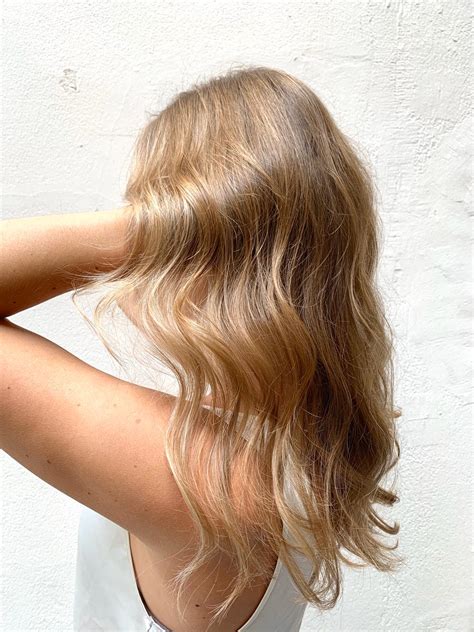Introduction
For those seeking to upgrade their hair game, understanding the distinction between highlights and balayage is paramount. Both techniques offer ways to add dimension, depth, and vibrancy to your tresses, but their approaches and results differ significantly.

The Essence of Highlights
Definition: Highlights involve strategically placing streaks of lightened hair throughout the base color, creating a more uniform and subtle brightening effect.
Application: Hair sections are selectively isolated using foils, which act as barriers to prevent the lightener from spreading to undesired areas.
Results:
– Creates a dimensional look with visible, defined streaks
– Can range from subtle to bold, depending on the amount and placement of highlights
The Art of Balayage
Definition: Balayage is a freehand painting technique where the colorist sweeps the lightener onto the hair’s surface, creating softer, more natural-looking blends.
Application: Hair is sectioned off, and the lightener is applied directly with a brush, allowing for more artistic control and seamless transitions.
Results:
– Produces a sun-kissed, beachy effect
– Mimics the natural fading of hair in the sun
– Can add dimension and depth without the starkness of traditional highlights
Highlights vs. Balayage: A Comparative Analysis
| Feature | Highlights | Balayage |
|---|---|---|
| Application | Isolated sections with foils | Freehand painting |
| Effect | More defined, uniform streaks | Softer, blended transitions |
| Precision | Higher, creating distinct lines | Lower, allowing for more subtle diffusion |
| Maintenance | Requires more frequent touch-ups | Generally lower maintenance |
| Time | Typically shorter application time | Can take longer due to freehand application |
| Cost | Can be more expensive due to precise application | Generally more affordable than highlights |
Motivations and Pain Points
Motivations:
– Enhance hair’s dimension and depth
– Create a more eye-catching look
– Cover gray hair or disguise roots
Pain Points:
– Potential damage to hair from chemical processing
– Cost can be a deterrent
– High maintenance can be a hassle
Effective Strategies
- Consider your hair type and condition: Highlights may be more suitable for thicker hair, while balayage works well on finer hair.
- Communicate your desired look: Discuss with your stylist the specific effects you’re aiming for.
- Choose a reputable stylist: Opt for experienced professionals who understand the nuances of both techniques.
- Mind your maintenance schedule: Regular touch-ups are essential for maintaining the desired results.
- Use heat protectants: Protect your treated hair from further damage.
Pros and Cons: A Balanced Perspective
Pros of Highlights:
- Precise control over placement and intensity
- Can dramatically change hair’s overall tone
- Suitable for all hair colors
Cons of Highlights:
- Can be more obvious and artificial-looking
- Higher risk of hair damage
- Requires more frequent maintenance
Pros of Balayage:
- Creates a more natural, sun-kissed effect
- Lower risk of hair damage
- Less maintenance required
Cons of Balayage:
- May not be as effective for covering gray hair
- Can take longer to achieve desired results
- Less precise than highlights
Innovation and Beyond
Ombré Balayage: Combines highlights and balayage to create a gradual transition of color from roots to tips, offering a sleek and sophisticated look.
Reverse Balayage: Inverts the traditional balayage technique by starting with lightened ends and blending into darker roots, resulting in a striking and edgy effect.
Rainbow Balayage: Infuses multiple vibrant colors into the balayage process, creating a playful and artistic masterpiece on hair.
Conclusion
The choice between highlights and balayage ultimately depends on your personal style and hair goals. Both techniques offer unique advantages and can transform your tresses, but it’s crucial to understand the differences to make an informed decision. Embrace the transformative power of these hair artistry techniques and elevate your look to new heights!
